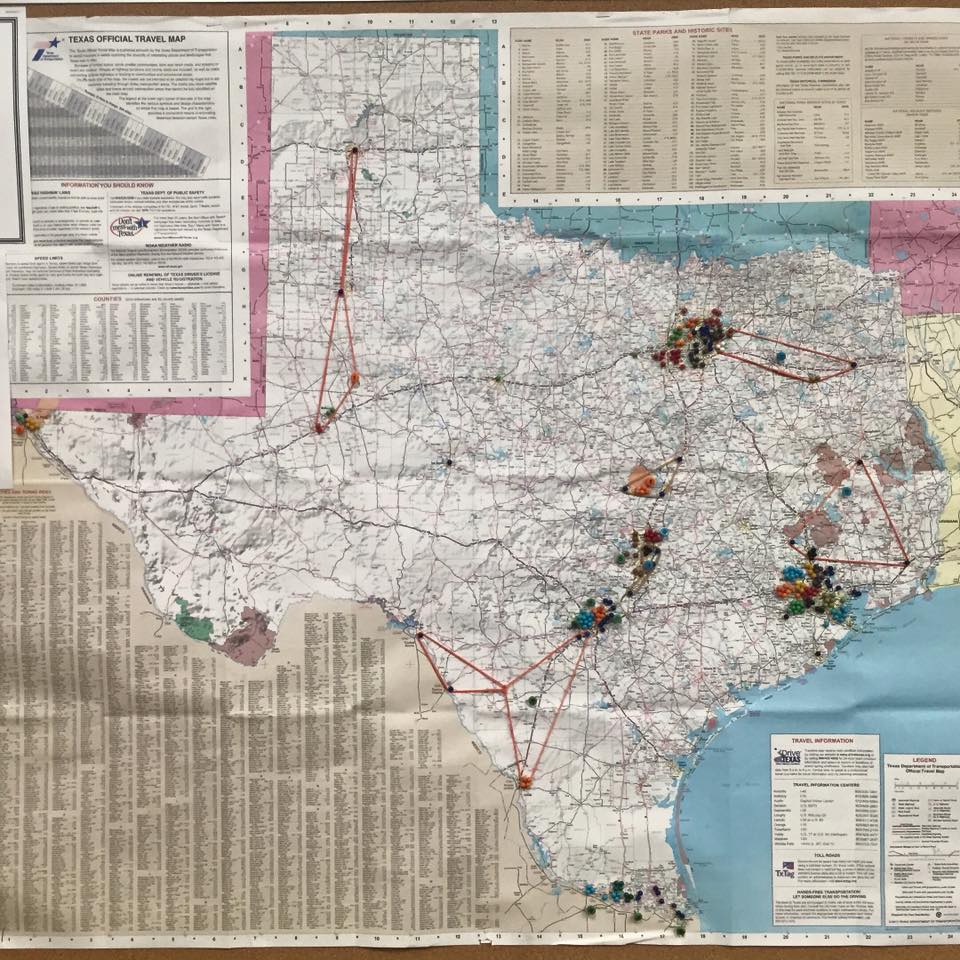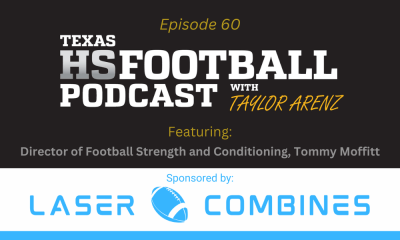
AUSTIN — The years before the University Interscholastic League (UIL) 2018 gear up for the realignment period following the Oct. 31 “Snapshot day” — the period all public schools submit their enrollment numbers — were long and arduous.
More than 1,000 push pins were placed in several maps and rubber bands were used to section off districts in four, then five, and later six classifications. Each of those districts required divisions and regions.
Many more rubber bands were required.
“For every map we had — every one you’re seeing in this room right now — we were placing pins on every one,” UIL Director of Athletics Susan Elza said. “You can imagine what that was like with the more than 1,200 schools we deal with and replacing them based on their classification. It would have taken us three weeks to pin those maps. Once you placed the pins you placed the rubber bands to create a district by sight. Then we went backwards and did mileage.”
With the new mapping technology, courtesy of Jones|Carter Engineering in Plano, the UIL was able to drop addresses of schools based on enrollment numbers and draw boundaries digitally. Elza said the ability to get instantaneous feedback on crucial logistical measures like mileage was groundbreaking.
She should know first hand of the difficulties first-hand. Before accepting her current position July 20, 2015, she was a student-athlete at Waco Midway High School, a head softball coach at Garland and an athletic director at Allen, and an executive director of athletics at Northwest ISD.
“The hardest part is drawing the boundary lines. You’re finding that city and district on a map. It took time with a lot of people working. With the new technology, the ‘pinning’ process takes minutes. It’s that efficient.”

Allen, which won a Class 6A state championship in December after defeating Lake Travis, is one of the UIL’s largest public high schools. Gordon DeLoach/TexasHSFootball
Each classification has 32 districts. Class 6A holds a single grouping of 32, while the 5A through 1A hold 16 districts in two divisions. The UIL then is responsible for placing these districts into regions that, for the most part, rotate clockwise around the state beginning in El Paso and ending in the Valley.
Strategically setting regions that hold eight district each digitally not only created better logistical pairings, it also cutdown man hours. The move from hand sticking pins in physical maps to mapping districts on a computer saved time in terms of hours versus the weeks it took before.
“This was a part of history. In 2018, the UIL has used a technology that we’ve never used before and moved away from our pins and maps,” she said. “It was a tough decision for us to get to because you don’t ever want to take away from the history of what you do, but you also want to evolve to where it serves the process and the schools better. It was a hard thing to do but the right thing to do.”
The first step in that process begins with a verification of each school’s “snapshot” and continues through Dec. 1 when the UIL releases the six classification’s cutoff numbers. For example, Conference 6A is 2,190 and above and conference 5A holds an enrollment requirement of between 2,189 and 1150. Two hundred and fifty-two football programs make each classification their home.
Conference 4A holds between 1149 and 505, conference 3A holds between 504 and 225, conference 2A holds between 224 and 105, and conference 1A holds numbers of 104.9 and below. There are 182 football programs on the 4A level, 211 at the 3A level, 187 at the 2A level, and 142 at the 1A level.
WHAT REALIGNMENT MEANS FOR TEAMS THAT WANT CHANGE IN DISTRICT
The districts, for now, are set thanks to some computer-generated help from Jones|Carter Engineering. The schools, though, will have two opportunities to petition their districts via the reclassification and realignment appeals process that falls between Feb. 2 and Feb. 11.

UIL Director of Athletics Dr. Susan Elza. Photo courtesy UIL
“The next step for us is waiting. The calls and questions asking, ‘Why we put them in that district’ will trickle in. We’ll talk them through [the process] and the appeals will kick in for some,” Elza said. “They have two rounds of appeals they can try to get their local schools to vote on. If they can’t meet the recommendation of that part appeal process, then they can come in front of the UIL Appeals Committee and plead their case.”
The first step the process comes at the district executive committee (DEC) level. Per a UIL press release, “schools wishing to change districts may do so by getting a unanimous vote from both the DEC they have been assigned and the DEC they wish to be assigned to.”
If a unanimous vote is is achieved by both DECs, the UIL notify the appealing school and both district chairs. The second level, which is available to only those who did not receive a first-level appeal, involves the District Assignment Appeals Committee, as well as every superintendent and principal at each school in the districts it wishes to leave and wishes to join.
The appeals hearing for that level is scheduled for Feb. 20.
—-—-—-—-—-—-—-—-—-
Marcus Matthews-Marion is the managing editor of TexasHSFootball, covering prep football throughout the Lone Star State and collegiate and professional football throughout the country. Follow him on Twitter, @TheMJMatthews, and read more of his content here.
Brought to you by:


















